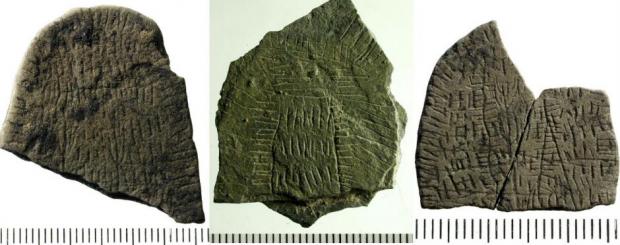Danes often refer to the holiday destination of Bornholm as ‘the sunshine island’, so it is only fitting that a cache of rocks carved in the Stone Age, which were recently excavated on the Danish island, have been dubbed ‘sun stones’.
The small stones are covered with designs carved by Stone Age people 5,000 years ago. The approximately 300 stones and fragments earned their name from their round shape and the circular carvings on their surface, which appear to radiate out from the centre. They include square stones carved with what resembles fields and grain and other patterns. Some are decorated with spider webs.
Scientists not sure of purpose
Scientists are not yet sure of the meaning or the purpose of the stones.
“That is the million dollar question,” Lars Larsson, a professor emeritus at the University of Lund in Sweden, told videnskab.dk. “It is impossible to know precisely what they were used for.”
The stones were found in Vasagård in southern Bornholm.
“Many of the stones are very worn, so it looks as though someone has walked around with them in their pocket,” said Finn Ole Sonne Nielsen, the lead archaeologist at Bornholm Museum, who collaborated with the National Museum of Denmark, Aarhus University, and the University of Copenhagen on the excavation.
“The Vasagård area has the appearance of a Stone Age society,” said Nielsen.
A number of finds over the years
The first sun stone was found in 1995 at another cultural site, Rispebjerg, around 8 km east of Vasagård.
“We’ve known about sun stones for a while, but the field stones are something entirely new – just yesterday we found four – and the variation among them with spider webs is something we didn’t know existed,” said Nielsen.











